Coffee Basics
Is Starbucks Coffee Organic? (Know This Before Ordering)
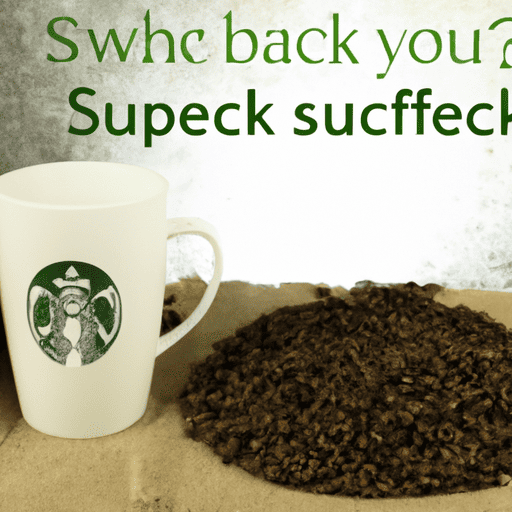
Ah, the smell of freshly brewed coffee. It’s a comforting and invigorating fragrance that can brighten up any morning routine. As a coffee lover, I frequently ponder the origins and quality of my go-to coffee spot: Starbucks.
One question that has crossed my mind many times is whether or not Starbucks offers organic coffee. Organic products have become increasingly popular in recent years, as consumers become more health-conscious and environmentally aware.
In this article, we’ll explore the world of organic coffee and take a closer look at what Starbucks has to offer in terms of organic options.
So grab your favorite mug and let’s dive in!
Key Takeaways
- Starbucks offers a variety of organic coffee options that are grown without harmful chemicals, taste better, and support sustainable farming practices.
- Starbucks is committed to fair trade practices and sustainable sourcing, promoting transparency and accountability in the global coffee industry.
- Sustainable farming methods prioritize the health of the planet and people who work in coffee production, benefit both the environment and those who work on farms, and can minimize the environmental impact of coffee production while promoting social responsibility in the industry.
- Consumer choices should consider values and priorities, including sustainability, fair trade practices, and organic certification, and can make a significant impact on the coffee industry by choosing sustainable options.
Understanding Organic Coffee
Hey there, did you know that if you’re looking for organic coffee at Starbucks, understanding what it means to be certified organic can help you make an informed decision?
Organic coffee is grown without the use of synthetic fertilizers and pesticides, which can harm both the environment and the health of those who consume it. This type of farming is better for the soil as it promotes biodiversity and improves water quality.
One of the benefits of organic farming is that it promotes sustainability. By avoiding harsh chemicals, farmers can protect their crops from pests while preserving natural resources such as water and soil. Additionally, this type of agriculture reduces greenhouse gas emissions because it doesn’t rely on chemical fertilizers that require large amounts of fossil fuels to produce.
On the other hand, non-organic coffee production has a significant impact on the environment. Chemicals used in conventional farming can contaminate nearby soil and water sources, harming wildlife and even causing health issues for local communities. Furthermore, large-scale non-organic coffee plantations often contribute to deforestation as forests are cleared to make room for more farms.
Understanding these differences between organic and non-organic farming is crucial when considering where your coffee comes from. So next time you order at Starbucks, keep in mind how their sourcing practices affect both people and planet.
Starbucks Coffee Sourcing
When it comes to sourcing their coffee, Starbucks takes great care in ensuring that the beans they use are of high quality and ethically sourced.
The company has a comprehensive overview of its coffee sourcing practices, which includes information on where the coffee is grown and how it is harvested.
In addition to sourcing from specific regions around the world, Starbucks also prioritizes building meaningful relationships with coffee farmers to help support their livelihoods and promote sustainable farming practices.
Overview of Starbucks Coffee Sourcing
Well, you may be surprised to learn that while Starbucks prides itself on ethical sourcing practices, not all of their coffee is organic. As I delved into the world of Starbucks coffee sourcing, I learned that the company does offer some organic options, but not all of their coffee beans meet this criterion.
Here’s what I discovered:
-
First of all, Starbucks sources its coffee from various regions across the globe, including Latin America, Africa, and Asia Pacific.
-
Within each region, they work with local farmers to ensure sustainable farming practices are followed.
-
They’ve also established a Coffee and Farmer Equity (C.A.F.E) Practices program which includes guidelines for social and environmental responsibility.
Despite these efforts towards sustainability and ethical sourcing practices, it’s important to note that not all Starbucks coffee is organic. So if you’re looking for an organic option at Starbucks or anywhere else for that matter, make sure to read the label carefully before making your purchase.
Moving on to the next section about sourcing from specific regions, we’ll dive deeper into how these practices vary depending on where the beans are grown.
Sourcing from Specific Regions
Let’s take a closer look at how Starbucks’ sourcing practices differ across regions. As a global company, Starbucks sources its coffee from different regions around the world, including Latin America, Africa, and Asia-Pacific.
Each region has its own unique climate and topography that affects the flavor profile of the coffee beans grown there. For example, in Latin America, Starbucks works with farmers in countries like Colombia and Costa Rica to source high-quality arabica coffee beans. These farmers follow sustainable farming practices and are often Fair Trade certified, which means they receive fair prices for their crops and have access to resources that help them improve their livelihoods.
In contrast, in Asia-Pacific countries like Indonesia and Vietnam, Starbucks sources robusta beans that are known for their bold flavors and higher caffeine content. By working with farmers in these regions to improve their growing techniques and invest in community development projects, Starbucks is able to ensure a consistent supply of quality coffee while also supporting local communities.
With its commitment to ethical sourcing practices across all regions where it sources its coffee from, Starbucks has established strong relationships with thousands of smallholder farmers worldwide. These relationships allow the company to work directly with farmers to improve crop quality while also providing support for education initiatives and other community development projects that benefit both the farmers themselves as well as the broader communities where they live.
Relationship with Coffee Farmers
If you’re interested in learning more about the relationships that coffee farmers have with their buyers, it’s important to understand the challenges and benefits of these partnerships. In order to ensure a steady supply of high-quality beans, Starbucks has established long-term relationships with coffee farmers all over the world. By working directly with these farmers, the company is able to provide them with technical assistance, financial support, and access to new markets.
Starbucks is also committed to fair trade practices and sustainable sourcing. The company pays premium prices for its coffee beans and invests in programs that help improve the livelihoods of small-scale farmers. Additionally, Starbucks works closely with local communities to address social and environmental issues related to coffee production. Through its initiatives, Starbucks seeks to promote transparency and accountability in the global coffee industry. This commitment to ethical sourcing extends beyond organic certification – which we will discuss in the next section – but also includes efforts towards responsible farming practices and ensuring fair wages for growers.
When it comes to Starbucks’ organic coffee options, customers may be surprised by what they find. While not all of their coffees are certified organic (as we will explore further), many of them are sourced from farms that use sustainable farming methods such as shade-grown or bird-friendly practices. It’s important for consumers to do their research when considering whether or not a product meets their personal standards for organic certification or other sustainability measures – but overall, Starbucks appears committed to offering a range of products that meet different consumer needs and preferences while still prioritizing responsible sourcing practices.
Starbucks Organic Coffee Options
You’ll be happy to know that Starbucks offers a variety of organic coffee options for you to choose from. Here are three key benefits of choosing organic coffee:
-
No harmful chemicals: Organic coffee is grown without the use of synthetic fertilizers, pesticides, or herbicides, which can have negative effects on both the environment and human health.
-
Tastes better: Organic coffee is often touted as having a cleaner taste since it’s grown in healthier soil and isn’t tainted by chemical residues.
-
Supports sustainable farming practices: Choosing organic coffee supports farmers who prioritize sustainability over profits, leading to healthier ecosystems and communities.
While Starbucks doesn’t exclusively offer organic coffee options, they do make it easy for customers to identify these products with clear labeling and marketing materials.
But what about non-organic coffee at Starbucks? Let’s explore this further in our next section.
Non-Organic Coffee at Starbucks
Congratulations, you’ve decided to go against your own personal values and order non-organic coffee at a coffee shop that has plenty of organic options available. While Starbucks offers a variety of organic coffee options, they also have non-organic blends available for those who may not be as concerned about the farming techniques or environmental impact associated with their morning cup of joe.
It’s important to note that non-organic coffee is typically grown using conventional farming techniques that involve the use of synthetic fertilizers and pesticides. These chemicals can have negative effects on both the environment and the farmers who work with them. In addition, conventional coffee farming often involves monoculture practices, which can lead to soil depletion and biodiversity loss.
To give you an idea of how much more environmentally friendly organic coffee can be compared to its non-organic counterpart, take a look at this table:
| Environmental Impact | Non-Organic Coffee | Organic Coffee |
|---|---|---|
| Pesticide Use | High | Low |
| Water Usage | High | Low |
| Biodiversity | Low | High |
As you can see, choosing organic coffee over non-organic has significant benefits for both the environment and our health. Speaking of health considerations…
Without taking another step into our next topic about ‘health considerations’, it’s crucial to understand the impact we have on our planet by choosing one type of drink over another. So let’s dive deeper into what makes organic coffees better for us and why we should consider switching from our regular cups in the next section.
Health Considerations
When it comes to non-organic coffee, one of the biggest health concerns is the presence of pesticide residue. Exposure to these chemicals can have serious health consequences, including an increased risk of cancer and other chronic illnesses.
On the other hand, choosing organic coffee can provide a number of benefits, such as reducing your exposure to harmful pesticides and supporting environmentally sustainable farming practices. As someone who cares about my health and the environment, I always make sure to choose organic coffee whenever possible.
Pesticide Residue in Coffee
If you’re a coffee lover, chances are you may not realize the amount of pesticide residue that could be in your daily cup of joe. While it’s true that coffee beans themselves aren’t sprayed with pesticides, they are often grown in areas where pesticides are used heavily on other crops. This means that the soil and water used to grow coffee can contain traces of these chemicals.
Here are four ways Starbucks is minimizing exposure to pesticide residue in their coffee:
- Sourcing organic beans: Starbucks offers several types of certified organic coffee which guarantees that no synthetic fertilizers or pesticides were used during cultivation.
- Supporting environmentally friendly farming practices: Through programs such as Coffee and Farmer Equity (C.A.F.E.) Practices, Starbucks encourages sustainable agricultural techniques that minimize environmental impact.
- Regularly testing for contaminants: Starbucks tests their coffee for pesticide residues to ensure they meet strict quality standards.
- Providing transparency about sourcing: The company provides information on their website about where their coffee comes from, how it’s grown and processed.
While these efforts by Starbucks help minimize exposure to pesticide residue in their coffee, it’s important to note that there are still potential health risks associated with long-term exposure to even small amounts of these chemicals.
In the next section, we’ll explore some of those health risks and what you can do to reduce your risk when drinking non-organic coffees.
Health Risks of Pesticide Exposure
You may be unaware of the potential health risks associated with pesticide exposure, especially when it comes to consuming non-organic foods and beverages like coffee. Pesticides are chemicals used to kill pests, but they can also harm humans if ingested in large amounts or over a long period of time. Exposure to pesticides has been linked to various health problems such as cancer, birth defects, neurological disorders, and reproductive issues.
To highlight the dangers of pesticide exposure further, consider this table:
| Health Risks | Pesticide Exposure |
|---|---|
| Cancer | Carcinogenic pesticides have been linked to cancer development. |
| Birth Defects | Certain pesticides can interfere with fetal development leading to birth defects. |
| Neurological Disorders | Some pesticides can affect the nervous system causing seizures or tremors. |
| Reproductive Issues | Exposure to certain pesticides can cause infertility or miscarriage. |
It’s essential for consumers to understand that even low-level exposure to these harmful chemicals over time could lead to serious health problems. Choosing organic coffee is one way we can reduce our exposure and minimize risks associated with pesticide ingestion.
Benefits of Choosing Organic Coffee
Opting for organic coffee can provide you with a myriad of benefits. For starters, it reduces your exposure to harmful pesticides commonly used in conventional coffee farming. These chemicals are known to have detrimental effects on both human health and the environment.
By choosing organic coffee, you not only take care of yourself but also help promote sustainable farming practices. Organic coffee is grown using methods that prioritize soil fertility, biodiversity conservation, and natural pest management techniques. This ensures that the production process is both environmentally friendly and socially responsible.
Additionally, organic farming methods often lead to higher quality beans as they’re allowed to ripen naturally instead of being forced through synthetic fertilizers or growth stimulants. Overall, choosing organic coffee is an investment in both your health and the planet’s well-being.
As much as we all want to prioritize our health and the environment, one factor that can sometimes hold us back from making the switch to organic coffee is cost. However, there are ways to make this transition more feasible without breaking the bank.
Cost of Organic Coffee
When it comes to organic coffee, one of the biggest concerns that people have is the cost. In my experience, I’ve found that organic coffee tends to be more expensive than non-organic coffee.
However, it’s important to understand why this is the case and how you can support sustainable farming practices by choosing organic options. By taking a closer look at the price comparison between organic and non-organic coffee, we can gain a better understanding of what goes into producing high-quality beans that are grown using environmentally-friendly methods.
Price Comparison with Non-Organic Coffee
Although Starbucks organic coffee may be slightly more expensive than their non-organic options, the difference in price is worth it for those who prioritize sustainability and health.
Organic coffee is grown without the use of harmful pesticides and chemicals, which not only benefits the environment but also ensures that these toxins do not end up in our bodies when we drink the coffee.
Conventionally grown coffee can have a significant environmental impact, as pesticides and chemical fertilizers can contribute to soil degradation and water pollution.
In addition to being better for the environment and our health, organic coffee typically has a superior taste due to its high-quality beans.
While it may cost a bit more upfront, choosing organic coffee can ultimately save money in the long run by reducing healthcare costs associated with exposure to harmful chemicals.
Understanding the cost of organic coffee goes beyond just looking at the price tag it’s about recognizing the value of supporting sustainable farming practices and prioritizing our own well-being.
Understanding the Cost of Organic Coffee
As we’ve seen in the previous subtopic, the price of organic coffee can be significantly higher than non-organic coffee. But why? There are several factors that affect the pricing of organic coffee.
Firstly, production costs are generally higher for organic coffee due to the use of sustainable farming practices, which require more labor and resources. Additionally, certification fees and audits also add to the cost.
Despite these higher costs, there are many benefits to supporting sustainable farming practices through purchasing organic coffee. By choosing organic coffee, you’re not only supporting environmentally friendly farming methods but also promoting fair trade and protecting farmers from harmful pesticides and chemicals. Moreover, it’s been shown that organic coffee is often of higher quality as it’s grown under optimal conditions without chemical interference.
Moving forward into our next section about supporting sustainable farming practices, it’s important to understand how our choices as consumers can make a significant impact on the industry as a whole.
Supporting Sustainable Farming Practices
You can be a part of creating a brighter future for farmers and the environment by choosing to sip on sustainably grown coffee that’s produced with methods prioritizing the health of both the planet and the people who work hard to bring it to your cup.
Sustainable farming methods promote long-term soil health, conserve water resources, reduce greenhouse gas emissions, and protect biodiversity. These practices also ensure fair wages and safe working conditions for farmers.
By supporting sustainable farming practices, you help minimize the environmental impact of coffee production while promoting social responsibility in the industry. This means you can enjoy your morning cup of joe knowing it was produced in an ethical and environmentally conscious way.
As consumer demand for organic coffee continues to grow, more companies are adopting sustainable farming methods to meet this demand while also reducing their carbon footprint.
Consumer Demand for Organic Coffee
When you’re looking for a healthier option, choosing organic coffee can satisfy your desire for quality and sustainability. Organic certification guarantees that the coffee beans have been grown without the use of synthetic pesticides, fertilizers, or genetically modified organisms (GMOs). This not only benefits the environment by reducing chemical pollution but also ensures that the coffee is free from harmful residues that can affect human health.
Consumer demand for organic coffee has been increasing in recent years, reflecting a growing awareness of the importance of ethical sourcing and sustainable farming practices. By choosing organic coffee, consumers are supporting farmers who prioritize soil conservation, biodiversity preservation, and fair labor practices. Moreover, organic farming methods can help mitigate climate change by reducing greenhouse gas emissions and promoting carbon sequestration in soil.
In addition to offering organic coffee options, Starbucks has implemented several sustainability initiatives to reduce its environmental footprint. They aim to source 100% ethically traded coffee by 2020 and achieve a 50% reduction in their carbon emissions by 2030. These efforts demonstrate how businesses can respond to consumer demand for environmentally responsible products while contributing to global sustainability goals.
Starbucks Sustainability Initiatives
If you’re looking for a way to make a positive impact on the environment while enjoying your morning brew, consider supporting companies like Starbucks that are making sustainability initiatives a priority. One of their key efforts is sourcing coffee beans in an ethical and sustainable manner. This means partnering with farmers who use environmentally friendly farming practices, paying fair wages and providing access to training and resources.
Starbucks also takes measures to reduce waste and energy consumption in their stores. For example, they’ve implemented recycling programs and switched to LED lighting. In addition, they work closely with suppliers to minimize packaging waste by using materials that are recyclable or made from renewable resources.
These sustainability initiatives not only benefit the environment but also contribute to the long-term success of Starbucks as a business. By prioritizing ethical sourcing and reducing waste, they can build stronger relationships with customers who care about these issues.
So next time you’re ordering your favorite latte at Starbucks, know that you’re supporting a company that’s committed to making a difference in the world around us.
As consumers, it’s important for us to make informed choices about where we spend our money. In the next section, we’ll explore whether Starbucks coffee is organic and what this means for those who prioritize organic products in their daily lives.
Making an Informed Choice
When it comes to making an informed choice about coffee, I find it helpful to consider my values and priorities. This means taking into account factors such as sustainability, fair trade practices, and organic certification.
Researching coffee brands and sourcing is also crucial in order to make sure that the beans are ethically sourced and produced. Ultimately, it’s important for me to make a conscious decision based on all of these factors in order to feel good about my coffee consumption habits.
Considering Your Values and Priorities
As I prioritize my values, I always consider the ethical considerations of the products that I consume.
When it comes to Starbucks coffee, it’s important to know whether their practices align with my beliefs. While Starbucks does offer organic options, not all of their coffee is organic and they don’t exclusively source from fair trade farms.
If fair trade and organic practices are important to me, then researching coffee brands and sourcing is essential in making an informed choice. By doing so, I can ensure that the coffee beans come from farmers who are paid fairly and have safe working conditions while also supporting environmentally sustainable farming practices.
Taking these factors into account allows me to make a conscious decision about what type of coffee aligns with my values and priorities.
Researching Coffee Brands and Sourcing
To find the perfect cup of joe that aligns with your values, it’s important to dig deeper into the origins and sourcing of different coffee brands, comparing them to puzzle pieces until you find the perfect fit.
One way to do this is by researching coffee farming techniques and ethical sourcing practices. Some coffee brands prioritize sustainability and fair trade practices, while others may use conventional farming methods that rely heavily on pesticides and chemicals.
When looking for an organic coffee brand like Starbucks, it’s important to understand their sourcing process. Starbucks has a comprehensive set of ethical sourcing standards that ensure their beans are grown using environmentally friendly practices. They also work directly with farmers to improve working conditions and promote sustainable agriculture in communities around the world.
By taking the time to research different brands and their sourcing practices, you can make a conscious decision about which cup of coffee best aligns with your values and priorities without sacrificing taste or quality.
Making a Conscious Decision
You want to feel confident that the coffee you choose reflects your values and priorities, so take the time to research different brands and their sourcing practices. Ethical consumption is becoming increasingly important in today’s world, and it’s essential to make environmentally friendly choices wherever possible.
When it comes to coffee, there are many factors to consider beyond just taste. One way to ensure that you’re making a conscious decision is by looking for organic coffee options. Organic coffee is grown without the use of synthetic pesticides or fertilizers, which can be harmful both to the environment and to those who work on farms.
Another consideration is fair trade certification, which guarantees that farmers are paid fairly for their labor. Finally, look for companies that prioritize sustainability in all aspects of their business practices – from packaging materials to energy usage.
By doing your research and choosing a brand that aligns with your values, you can feel good about enjoying your morning cup of joe.
Frequently Asked Questions
How does Starbucks ensure that their non-organic coffee is safe for consumption?
When it comes to food safety measures, Starbucks takes the matter very seriously. As a company, we have established policies and procedures to ensure that our non-organic coffee is safe for consumption.
We adhere to strict quality control standards, including regular inspections of our facilities and equipment, as well as rigorous testing of our products for contaminants and other potential hazards. In terms of the processing of non-organic coffee, we use methods such as roasting and grinding to eliminate any harmful bacteria or chemicals that may be present.
Additionally, we work closely with our suppliers to ensure that they follow similar food safety protocols in their production processes. Ultimately, the health and satisfaction of our customers are of utmost importance to us, and we will continue to take all necessary steps to maintain the highest levels of food safety in everything we do.
Are there any health benefits to drinking organic coffee from Starbucks?
When it comes to organic coffee benefits, drinking it can potentially provide health advantages such as reducing the risk of certain diseases and promoting overall well-being.
Organic coffee is grown without the use of synthetic pesticides or fertilizers, which means fewer harmful chemicals in your cup. Additionally, organic coffee production often supports sustainable farming practices that are better for the environment.
While Starbucks may not offer exclusively organic coffee options, choosing a certified organic blend when available could be a wise choice for those looking to prioritize their health and environmental impact.
Does Starbucks plan to expand their organic coffee options in the future?
I recently visited a Starbucks in Seattle and was pleased to find that they had a new organic coffee option on the menu. When I asked the barista about it, she explained that Starbucks is committed to expanding their organic offerings in the future as part of their sustainability efforts.
They’ve recognized the ethical sourcing concerns surrounding coffee production and are taking steps towards more responsible practices. While not all of their coffees are currently organic, they’re making progress towards more sustainable options.
It’s important for consumers to be aware of these initiatives and support companies who prioritize environmental responsibility.
How does Starbucks measure the success of their sustainability initiatives?
As someone interested in Starbucks’ sustainability practices, I can say the company measures success through various methods.
One important tool is the annual sustainability report. This report provides detailed information about the company’s progress toward goals related to ethical sourcing, waste and carbon emission reduction, and supporting local communities. It includes data on key performance indicators such as energy usage and water conservation, as well as qualitative assessments of initiatives like community service projects and employee engagement programs.
In addition to formal reporting, Starbucks solicits feedback from customers through surveys and other channels. This feedback helps gauge customer perceptions of the company’s environmental and social impact.
Overall, these various methods help Starbucks track progress over time and identify areas for continuing improvement in sustainability practices.
Are there any ethical concerns with Starbucks’ coffee sourcing practices, even for their organic options?
When it comes to Starbucks’ coffee sourcing practices, there are certainly some fair trade concerns to be aware of. The company has made efforts in recent years to improve the working conditions and wages for coffee farmers, but there is still room for improvement.
Additionally, the environmental impact of producing coffee on a large scale can be significant, especially when it comes to water usage and deforestation. While Starbucks does offer organic options, this doesn’t necessarily guarantee that their coffee is free from ethical concerns.
It’s important for consumers to do their own research and make informed decisions about where they choose to buy their coffee from.
Conclusion
In conclusion, as someone who enjoys drinking coffee regularly, I now have a better understanding of Starbucks’ organic coffee options and sourcing practices. While not all of their coffee is organic, they do offer several certified organic blends and are committed to ethical sourcing and sustainability initiatives.
One interesting statistic that adds a level of sophistication to the discussion is that according to a study by the Organic Trade Association, sales of organic coffee in the United States have more than tripled in the past decade, with millennials being the largest group of consumers. This highlights the increasing consumer demand for organic and sustainably sourced products, including coffee.
Overall, it’s important to make an informed choice when ordering at Starbucks or any other coffee shop. Considering factors such as health considerations, cost, and personal values can help guide your decision on whether or not to choose an organic option.
And with Starbucks’ commitment to responsible sourcing and sustainability initiatives, we can feel good about supporting their efforts while enjoying our daily cup of joe.
Arf, an author and an innovative enthusiast of coffee, coffee alternatives, and tea, plays a crucial role as a contributor to the esteemed Cappuccino Oracle platform. Renowned for his curiosity and passion for these captivating beverages, Arf has carved out a unique space for himself in the world of exploration and writing. He realized that coffee, coffee alternatives, and tea are not mere drinks to keep one awake, but universes of flavors and stories waiting to be explored.
Arf’s articles for Cappuccino Oracle blend meticulous research with personal experiences, providing readers with an in-depth understanding of various types of coffee, coffee alternatives, and tea, along with their unique characteristics, cultures, and histories. His honest reviews and engaging narratives guide readers on their own journeys, helping them discover their preferences and find their perfect brew.
Coffee Basics
How Does a Coffee Maker Works

We are going to explore the exciting realm of coffee makers. Get ready to be amazed as we uncover the complex mechanisms of these incredible machines.
From the basic components and water heating mechanisms to the brewing process and the importance of filters, we will leave no stone unturned.
So grab a cup of joe and join us as we delve into the inner workings of how a coffee maker works.
Key Takeaways
- The coffee maker consists of basic components such as a water reservoir, heating element, filter basket, and carafe.
- The water is heated in the heating element to the desired temperature, and a temperature control mechanism maintains the desired temperature.
- The brewing process involves pre-infusion, extraction through hot water sprayed over coffee grounds, filtration, and temperature control for consistent flavor.
- The quality of filters and grind size play a crucial role in the taste and flavor of the brewed coffee.
Basic Components of a Coffee Maker
The basic components of a coffee maker include a water reservoir, a heating element, a filter basket, and a carafe. These components work together to ensure a smooth coffee-making process.

Coffee maker maintenance is crucial to keep these components in good working condition. Regular cleaning of the water reservoir prevents the buildup of mineral deposits, which can affect the taste of your coffee.
The heating element should be checked for any signs of damage or malfunction and replaced if necessary. Clogged filter baskets can lead to weak or bitter coffee, so it’s important to clean them regularly.
Troubleshooting common coffee maker problems involves checking for issues such as leaks, slow brewing, or uneven coffee extraction. By understanding and maintaining these basic components, you can ensure a consistently delicious cup of coffee.
Water Heating and Dispensing Mechanism
How does the coffee maker heat and dispense water?

The water heating and dispensing mechanism in a coffee maker involves a complex process that ensures the water is heated to the optimal temperature and distributed evenly for brewing.
When you pour water into the coffee maker’s reservoir, it’s drawn into the heating element through a tube using a water circulation system.
The heating element, usually a heating coil, heats the water to the desired temperature, typically between 195-205 degrees Fahrenheit.
The temperature control mechanism ensures that the water remains at the desired temperature throughout the brewing process.

Once the water reaches the desired temperature, it’s dispensed through a showerhead or spray nozzle evenly over the coffee grounds in the filter basket.
This allows for an even extraction of flavors and ensures a delicious cup of coffee.
Brewing Process and Extraction of Coffee
Our coffee maker’s brewing process and extraction of coffee rely on the precise combination of water, heat, and ground coffee beans. This intricate process involves several extraction techniques and careful control of the brewing temperature. Here’s a breakdown of how our coffee maker achieves the perfect cup of coffee:
- Pre-infusion: The brewing process begins with a short pause, allowing the coffee grounds to bloom and release their flavors.
- Extraction: Hot water is then sprayed over the coffee grounds, extracting the desired flavors and oils.
- Brewing time: The water and coffee mixture is allowed to steep for a specific duration, ensuring optimal extraction.
- Filtration: The brewed coffee passes through a filter, separating the grounds from the liquid.
- Temperature control: Throughout the brewing process, the coffee maker carefully maintains the ideal brewing temperature, ensuring a consistent and flavorful cup of coffee.
Importance of Filters in Coffee Makers
To understand the importance of filters in coffee makers, let’s explore how they contribute to the overall quality of your brew. The role of paper filters in coffee makers is crucial as they play a significant part in ensuring that your coffee tastes its best. Filters are responsible for removing unwanted particles and oils from the coffee grounds, resulting in a cleaner and smoother cup of joe. The impact of filter quality on coffee taste cannot be underestimated. A high-quality filter will effectively trap sediments and oils, preventing them from reaching your cup and imparting bitterness or unwanted flavors. On the other hand, a low-quality filter may allow these undesirable elements to pass through, leading to an inferior coffee experience. Therefore, investing in good quality filters is essential for achieving a delicious and enjoyable brew.

| Filter Quality | Impact on Coffee Taste |
|---|---|
| High | Cleaner, smoother, better taste |
| Medium | Acceptable taste |
| Low | Bitterness, unwanted flavors |
Understanding the Role of Grind Size
Grind size plays a crucial role in the brewing process of a coffee maker. It directly affects the taste and flavor of the coffee that’s brewed.
Here are some key points to understand the impact of grind size on the extraction efficiency:
- Size matters: The grind size determines the surface area of the coffee particles that come into contact with water during brewing.
- Flavor extraction: Finer grind sizes increase the extraction of flavors, resulting in a stronger and more intense coffee taste.
- Brewing time: Coarser grind sizes require longer brewing times to achieve optimal extraction, while finer grind sizes extract quickly.
- Extraction control: By adjusting the grind size, you can control the extraction process and fine-tune the flavor profile of your coffee.
- Consistency is key: Consistent grind size ensures even extraction and a balanced flavor in every cup.
Understanding the relationship between grind size and coffee flavor is essential for achieving the perfect brew with your coffee maker.
Frequently Asked Questions
How Much Coffee Should I Use in a Coffee Maker?
When it comes to brewing coffee, it’s crucial to consider the coffee measurements for optimal taste. Different brewing techniques require different ratios, but generally, a good starting point is using 1-2 tablespoons of coffee per 6 ounces of water.

Can I Use Instant Coffee in a Coffee Maker?
Sure, we can definitely use instant coffee in a coffee maker. The pros include convenience and speed, while the cons may be a compromise in taste and quality. It’s a trade-off, but it works.
How Long Does It Take for a Coffee Maker to Brew a Full Pot of Coffee?
The brewing time of a coffee maker can vary depending on several factors. These factors include the type of coffee maker, the size of the pot, the desired strength of the coffee, and the brewing method used.
Can I Use Tea Leaves Instead of Coffee Grounds in a Coffee Maker?
Using tea bags instead of coffee grounds in a coffee maker has pros and cons. The pros include convenience and variety, while the cons include potential flavor contamination and residue buildup.
Is It Possible to Make Iced Coffee Using a Coffee Maker?
Yes, it is possible to make iced coffee using a coffee maker. There are various iced coffee recipes and alternative brewing methods that can be used to achieve a refreshing and delicious cold coffee drink.

Conclusion
In conclusion, understanding how a coffee maker works involves grasping the intricacies of its basic components, water heating and dispensing mechanism, brewing process, extraction of coffee, and the importance of filters.
By comprehending the role of grind size, one can further enhance the flavor and quality of their brewed coffee.
Just as the saying goes, ‘A well-oiled machine,’ a coffee maker operates with precision and efficiency, ensuring a delightful cup of joe every time.
Justin is a seasoned author, coffee and tea enthusiast, and an essential member of the Cappuccino Oracle team. With a keen appreciation for the complexities of coffee, coffee alternatives, and tea, Justin has dedicated his professional career to exploring these realms and sharing his insights with readers worldwide.
Justin’s immersion in the world of coffee, coffee alternatives, and tea began at a young age, kindling a passion that extended beyond mere consumption. This love for these beverages led him to combine his talent for writing with his devotion to coffee and tea, bringing him to Cappuccino Oracle as a dedicated author.
Coffee Basics
How Can I Get Coffee Delivered

Do you find yourself frustrated with the long queues at the coffee shop every morning?
Well, we’ve got some exciting news for you! We’ve discovered a variety of convenient ways to have coffee delivered right to your doorstep.
From local coffee shop delivery services to online subscriptions and grocery store options, there’s a delivery method to suit every coffee lover’s needs.
Get ready to say goodbye to long queues and hello to the delightful aroma of freshly brewed coffee at home.
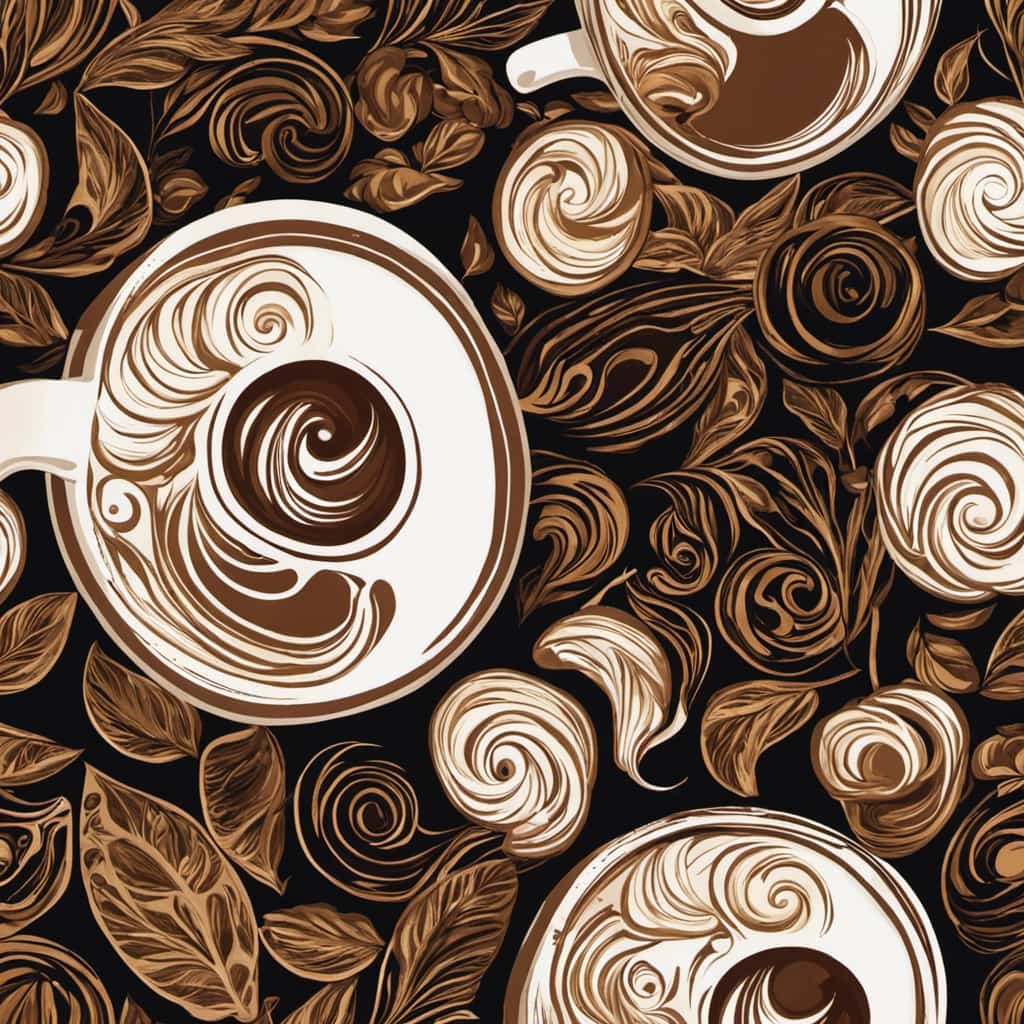
Key Takeaways
- Local coffee shops offer convenient delivery services through coffee delivery apps.
- Online coffee subscription services provide customizable options for coffee delivery.
- Grocery stores offer online ordering and delivery services for coffee.
- Food delivery apps offer a wide range of coffee delivery options from various coffee shops.
Local Coffee Shop Delivery Services
Our favorite local coffee shop, Joe’s Cafe, offers a convenient delivery service for all coffee lovers in the area. With the rise of coffee delivery apps, it has become easier than ever to enjoy your favorite brew from the comfort of your own home or office.
Joe’s Cafe has partnered with these apps to bring their delicious coffee straight to your doorstep. The pricing for their coffee delivery service is reasonable and competitive, ensuring that you can enjoy a fresh cup of joe without breaking the bank.
Whether you prefer a classic latte or a bold espresso, Joe’s Cafe has you covered. Simply download the app, browse their menu, place your order, and sit back as your coffee is delivered right to you.
It’s never been easier to satisfy your caffeine cravings.

Online Coffee Subscription Services
We love exploring different coffee options, and one convenient way to do that’s through online coffee subscription services. These services offer a variety of online coffee delivery options, allowing you to have your favorite beans or blends delivered right to your doorstep.
One of the benefits of coffee subscription services is the convenience they offer. You can choose the type of coffee you want, the frequency of delivery, and even customize your order based on your preferences. Additionally, many subscription services work directly with coffee roasters, ensuring that you receive fresh and high-quality coffee every time.
With online coffee subscription services, you can easily discover new flavors and expand your coffee palate without leaving your home.
Now, let’s move on to explore grocery store delivery options.
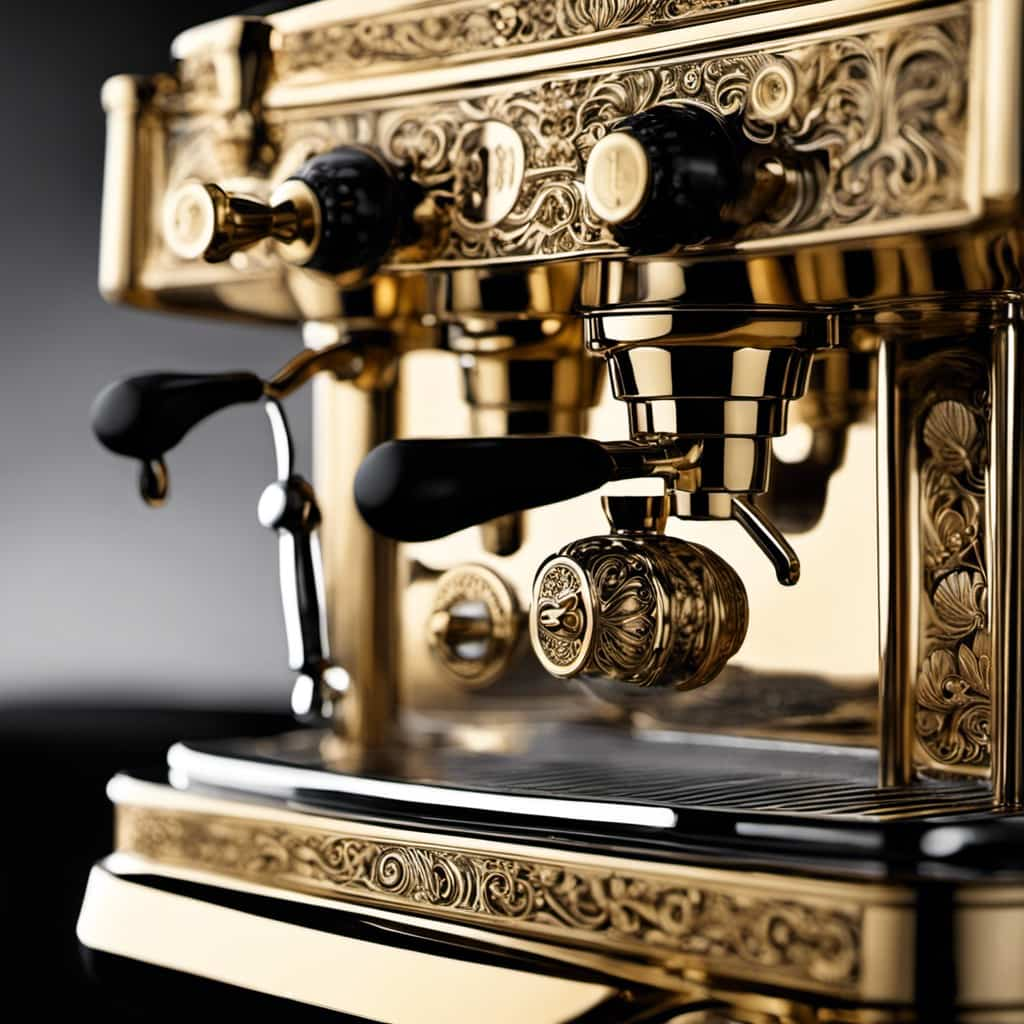
Grocery Store Delivery Options
Sometimes, grocery stores offer coffee delivery services that allow us to conveniently have our favorite beans or blends delivered right to our doorstep. Here are three grocery store delivery options to consider:
- Online Ordering: Many grocery stores now have websites or mobile apps where you can browse their coffee selection, place an order, and schedule a delivery. This option provides the convenience of shopping from the comfort of your home.
- Meal Kit Delivery: Some grocery stores offer meal kit delivery services that include coffee as part of their packages. These meal kits are designed to provide you with all the ingredients needed to cook a specific meal, and they often include coffee as a beverage option.
- Convenience Store Delivery: In addition to traditional grocery stores, some convenience stores now offer delivery services. These stores typically have a limited selection of coffee options, but they can be a convenient option for those who need their coffee fix quickly.
With these grocery store delivery options, you can easily get your favorite coffee delivered to your doorstep without having to leave the comfort of your home.
Food Delivery Apps That Offer Coffee
Continuing from the previous subtopic, we can explore the convenience of ordering coffee through food delivery apps.
These apps provide a wide range of coffee delivery options, allowing you to enjoy your favorite brew from the comfort of your home or office. Whether you prefer a classic cup of black coffee or a fancy espresso-based drink, these apps have got you covered.
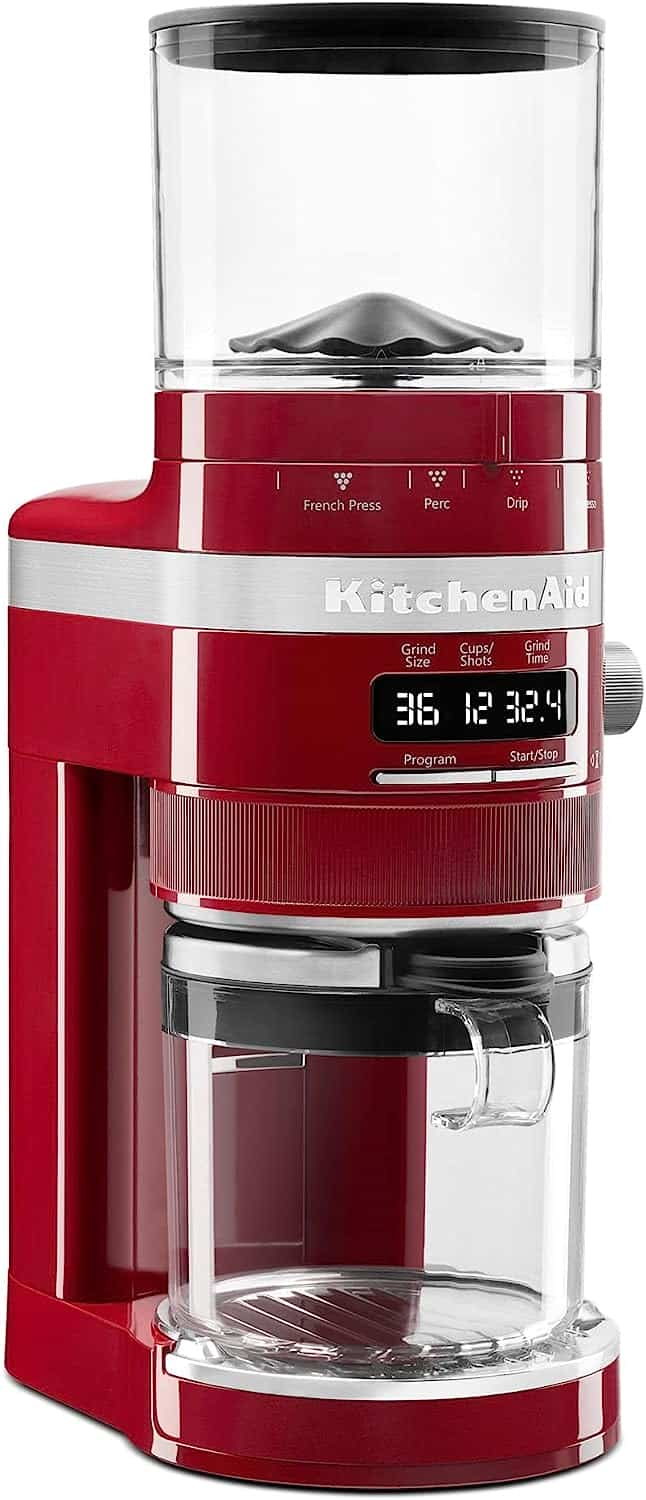
With just a few taps on your smartphone, you can browse through various coffee shops and choose your desired blend. However, it’s important to note that some food delivery apps may charge additional coffee delivery fees. Therefore, it’s advisable to check the app’s fee structure before placing your order.
Now, let’s move on to the next section where we’ll discuss specialty coffee roasters with nationwide shipping.
Specialty Coffee Roasters With Nationwide Shipping
Many specialty coffee roasters offer nationwide shipping for their unique blends.
Here are three specialty coffee roasters that prioritize direct trade coffee sourcing and single origin coffee beans:

- Blue Bottle Coffee: Blue Bottle Coffee is known for its commitment to sourcing high-quality, single origin coffee beans. They have a variety of blends and single origin options available for delivery nationwide. Their coffee is sourced through direct trade relationships, ensuring fair wages and sustainable practices.
- Intelligentsia Coffee: Intelligentsia Coffee is dedicated to sourcing single origin coffee beans directly from farmers around the world. They have an extensive selection of coffee beans, including limited edition releases and seasonal offerings. Their nationwide shipping allows coffee lovers to enjoy their unique blends no matter where they are.
- Stumptown Coffee Roasters: Stumptown Coffee Roasters sources their coffee through direct trade relationships with farmers. They offer a wide range of single origin and blended coffee options, all roasted to perfection. With nationwide shipping, customers can experience the exceptional taste of Stumptown coffee from the comfort of their homes.
These specialty coffee roasters provide coffee enthusiasts with the convenience of nationwide shipping while maintaining a focus on direct trade coffee sourcing and single origin coffee beans.
Frequently Asked Questions
Can I Customize My Coffee Order With Specific Flavors or Milk Options?
Yes, you can customize your coffee order with specific flavors or milk options. Our menu offers a variety of options for customized coffee flavors and milk preferences to satisfy your unique taste preferences.
Are There Any Discounts or Loyalty Programs Available for Regular Coffee Delivery Customers?
There are discount options and customer rewards available for regular coffee delivery customers. We offer a variety of discounts and loyalty programs to ensure that our customers feel appreciated and receive the best value for their coffee deliveries.
How Do I Ensure That My Coffee Will Be Delivered at the Right Temperature for Optimal Taste?
To ensure optimal taste, we recommend following best practices for storing coffee beans and using reputable coffee delivery services. This guarantees that your coffee will be delivered at the right temperature for a satisfying cup every time.

Can I Schedule Recurring Coffee Deliveries to Ensure I Never Run Out of My Favorite Brew?
To ensure scheduling convenience and never run out of our favorite brew, we can set up recurring coffee deliveries. This way, we can enjoy the taste of our preferred coffee without worrying about alternative options.
Are There Any Environmentally-Friendly Packaging Options Available for Coffee Delivery?
When it comes to coffee delivery, we prioritize sustainability. Rest assured, our service offers a range of eco-friendly options for packaging. We strive to minimize our environmental impact while delivering your favorite brew.
Conclusion
In conclusion, whether you’re craving a cup of joe in the comfort of your own home or need a caffeine fix delivered to your office, there are plenty of options available to get coffee delivered right to your doorstep.
From local coffee shops and online subscription services to grocery stores and food delivery apps, you can easily satisfy your coffee cravings without leaving your house.
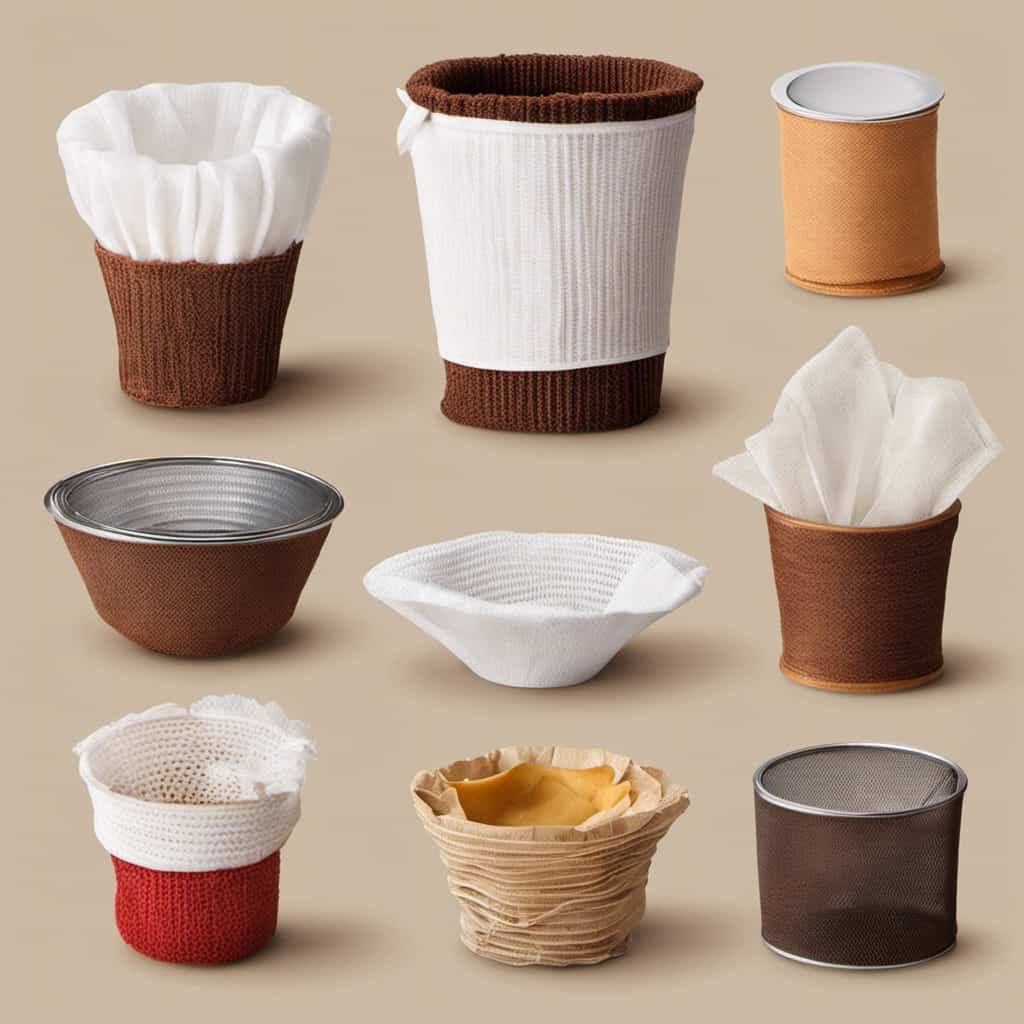
So why wait? Treat yourself to a piping hot brew and let the coffee come to you.
Justin is a seasoned author, coffee and tea enthusiast, and an essential member of the Cappuccino Oracle team. With a keen appreciation for the complexities of coffee, coffee alternatives, and tea, Justin has dedicated his professional career to exploring these realms and sharing his insights with readers worldwide.
Justin’s immersion in the world of coffee, coffee alternatives, and tea began at a young age, kindling a passion that extended beyond mere consumption. This love for these beverages led him to combine his talent for writing with his devotion to coffee and tea, bringing him to Cappuccino Oracle as a dedicated author.
Coffee Basics
Does Vanilla Bean Have Coffee

The enticing aroma of vanilla fills the air, tantalizing our senses and sparking intrigue. Exploring the realm of vanilla beans leads us on a quest to dispel a widespread misunderstanding.
Does this beloved flavor contain hints of coffee? Join us as we explore the origins, flavor profile, and chemical composition of vanilla bean.
Together, we’ll uncover the truth and settle the age-old question: does vanilla bean have coffee?
Key Takeaways
- Vanilla bean is derived from the orchid Vanilla planifolia, while coffee comes from the Coffea plant.
- Vanilla bean has its own distinct flavor profile, characterized by sweet and floral notes, while coffee has a rich and bold taste with hints of bitterness.
- Vanilla bean does not contain any coffee, and the misconception that it does is false.
- Vanilla bean is commonly used in baking and cooking to add a rich, sweet flavor to dishes, and it offers health benefits due to its antioxidant content.
The Origins of Vanilla Bean
Vanilla bean originates from the orchid Vanilla planifolia. This tropical orchid is native to Mexico and Central America. Vanilla bean cultivation requires specific growing conditions, including warm temperatures, high humidity, and well-drained soil. The plant typically grows as a vine, with long green stems that can reach up to 30 feet in length.

The vanilla bean itself is the fruit of the orchid, which is harvested when it reaches maturity. Historically, vanilla bean has been used for a variety of purposes. The ancient Mayans and Aztecs used it as a flavoring for their chocolate beverages, while Europeans later discovered its aromatic qualities and began using it in baking and cooking.
Today, vanilla bean continues to be a popular ingredient in a wide range of culinary creations, from desserts to beverages.
The Flavor Profile of Vanilla Bean
Why does vanilla bean have such a distinct and sought-after flavor?
The flavor profile of vanilla bean is characterized by its rich, sweet, and creamy taste. However, it’s the aroma of vanilla bean that truly sets it apart.
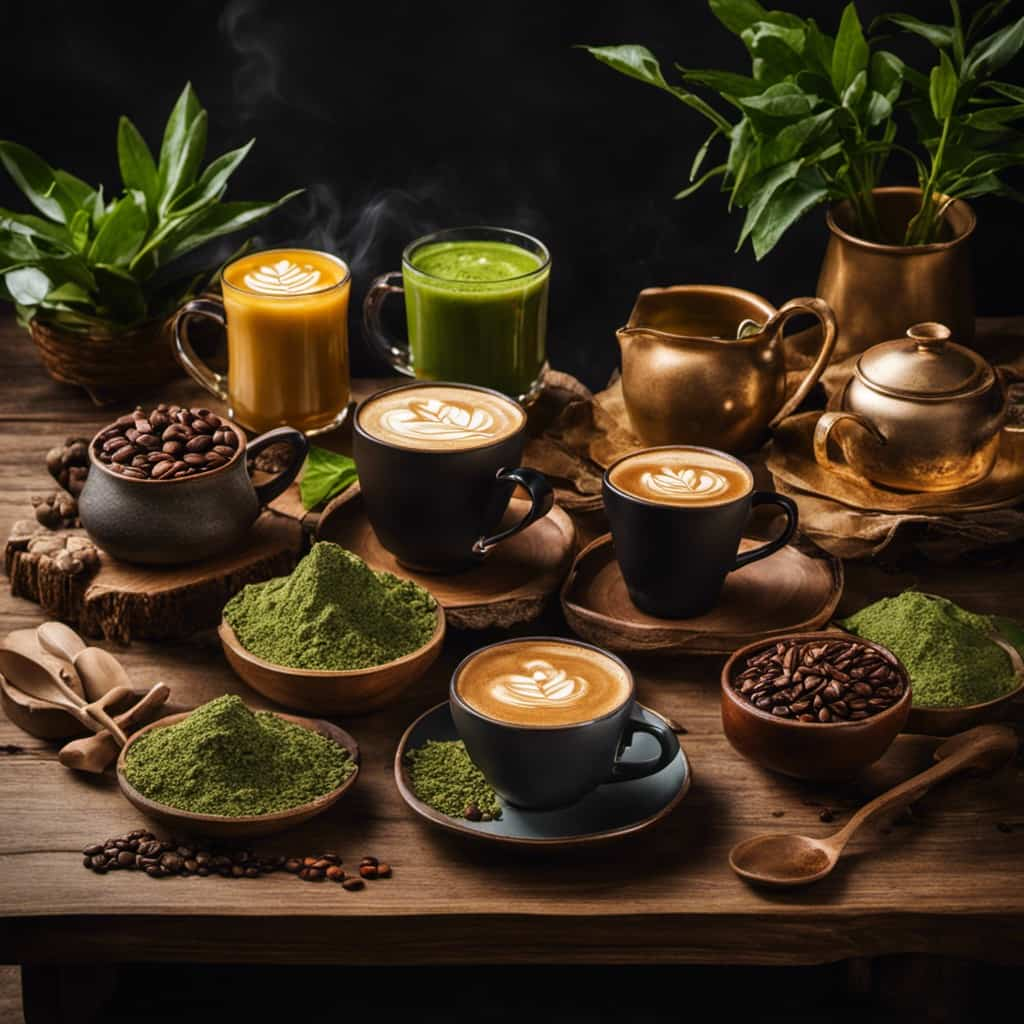
The beans emit a warm and inviting scent that’s often described as floral, with hints of caramel and chocolate. This unique fragrance adds depth and complexity to dishes, making it a popular ingredient in both sweet and savory recipes.
Vanilla bean is commonly used in baking, where its sweet and aromatic qualities enhance the flavors of cakes, cookies, and custards. It’s also used in beverages, such as coffee and cocktails, to provide a subtle and alluring aroma.
With its versatile and exquisite flavor profile, vanilla bean continues to be a staple in culinary creations.
The Common Misconception About Coffee in Vanilla Bean
Continuing our exploration of vanilla bean’s flavor profile, it’s important to address a common misconception about the presence of coffee in vanilla bean. Contrary to popular belief, vanilla bean doesn’t contain any coffee. This is one of the common myths surrounding vanilla bean that has been perpetuated over the years.

To clarify any confusion, here are some key points to consider:
- Vanilla bean is derived from the orchid plant, while coffee comes from the beans of the Coffea plant.
- Vanilla bean has its own distinct flavor profile, characterized by its sweet and floral notes.
- Coffee, on the other hand, has a rich and bold taste with hints of bitterness.
- While both vanilla and coffee are often used together in various recipes, they’re separate ingredients with unique properties.
It is important to debunk these misconceptions to ensure accurate information is shared about vanilla bean and its health benefits.
The Chemical Composition of Vanilla Bean
To understand the chemical composition of vanilla bean, we need to examine its unique blend of compounds. Vanilla bean contains a variety of compounds that contribute to its distinct flavor and aroma. One of the key compounds found in vanilla bean is vanillin, which is responsible for its sweet and creamy taste. Other compounds present in vanilla bean include eugenol, which gives it a subtle spicy note, and coumarin, which adds a hint of bitterness.
The extraction methods of vanilla bean involve soaking the beans in alcohol to release these compounds. In addition to its delicious taste, consuming vanilla bean has been associated with several health benefits. It’s rich in antioxidants, which can help protect against oxidative stress and inflammation. Furthermore, vanilla bean has been found to have potential anti-cancer properties.

With its unique chemical composition and health benefits, vanilla bean is truly a remarkable ingredient. Now let’s move on to the next section to find out the verdict: does vanilla bean have coffee?
The Verdict: Does Vanilla Bean Have Coffee?
Now let’s determine whether or not vanilla bean contains coffee. Vanilla bean doesn’t contain coffee. It’s derived from the fruit of the vanilla orchid, and its flavor comes from the compounds found in the bean itself.
Here are some key points to consider about vanilla bean:
- Vanilla bean is commonly used in baking and cooking to add a rich, sweet flavor to dishes.
- It’s often used in desserts such as cakes, cookies, and ice cream.
- Vanilla bean has a natural fragrance and can enhance the aroma of baked goods.
- In addition to its taste and smell, vanilla bean also offers some health benefits. It contains antioxidants that can help reduce inflammation and improve heart health.
Frequently Asked Questions
How Is Vanilla Bean Grown and Harvested?
Vanilla bean farming techniques involve careful cultivation and harvesting. The process requires specific temperature and humidity conditions to ensure optimal growth. We use traditional methods to produce high-quality vanilla beans for various culinary purposes.

What Are the Different Types of Vanilla Bean Available in the Market?
Different flavors of vanilla bean are available in the market, each with its own unique taste and aroma. From Madagascar to Tahitian, these varieties can enhance a wide range of desserts and baked goods. Discover the best recipes using vanilla bean.
Can Vanilla Bean Be Used as a Substitute for Coffee?
Vanilla bean is a versatile flavoring agent that can be used in baking. It adds a rich, sweet taste to desserts and beverages. However, it does not contain coffee and cannot be used as a substitute for it.
Are There Any Health Benefits Associated With Consuming Vanilla Bean?
Vanilla bean is a versatile ingredient that can enhance the flavor of various recipes. Additionally, it is known for its potential health benefits and is commonly used in skincare products.
How Should Vanilla Bean Be Stored to Maintain Its Freshness and Flavor?
Storing techniques and preserving methods are important to maintain the freshness and flavor of vanilla bean. Proper storage in an airtight container, away from heat and light, will help preserve its quality for longer periods.
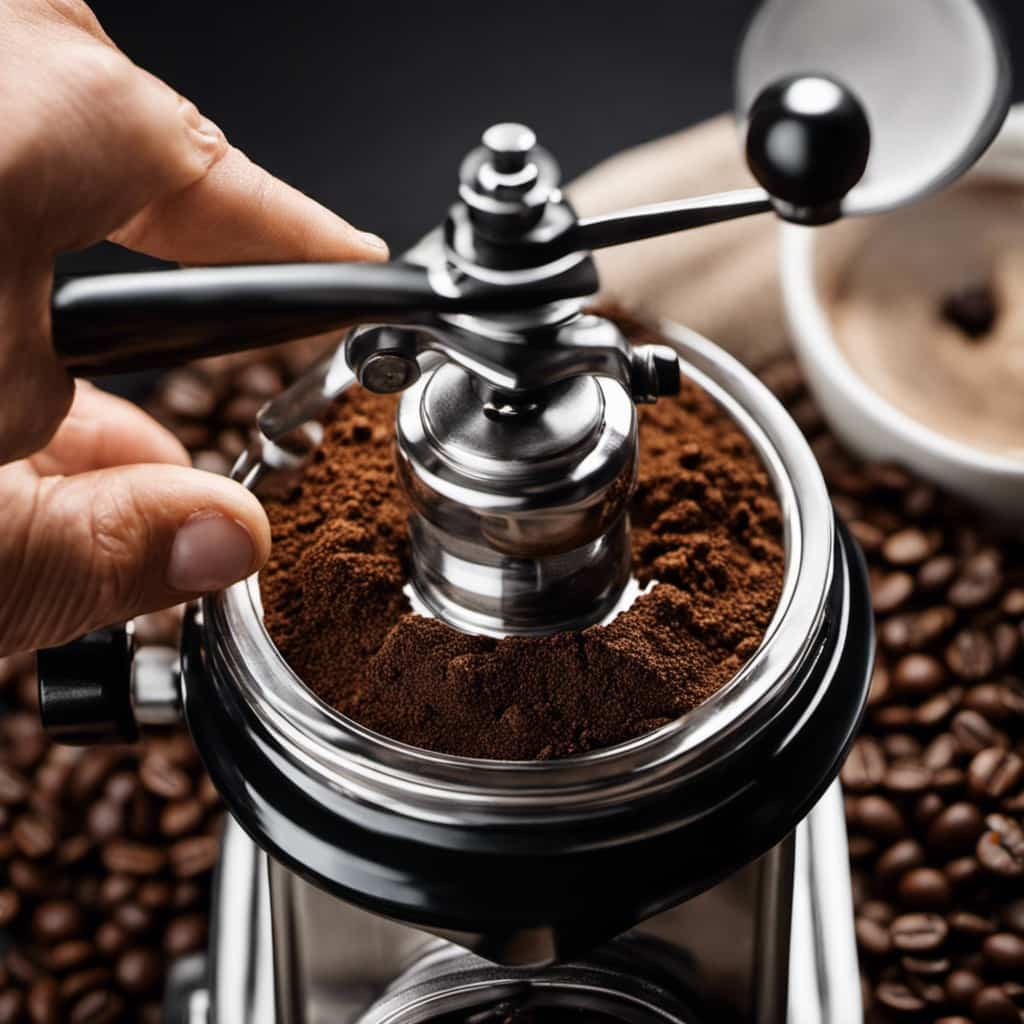
Conclusion
In conclusion, vanilla bean doesn’t have coffee. While both vanilla and coffee have distinct flavors and aromas, they come from different sources.
Vanilla bean is derived from the orchid plant, while coffee beans are the seeds of the coffee plant. Although they can be paired together in various culinary creations, vanilla and coffee are separate entities when it comes to their composition.
So next time you enjoy the rich and smooth taste of vanilla, remember that it’s all about the beans, but without the coffee.
Justin is a seasoned author, coffee and tea enthusiast, and an essential member of the Cappuccino Oracle team. With a keen appreciation for the complexities of coffee, coffee alternatives, and tea, Justin has dedicated his professional career to exploring these realms and sharing his insights with readers worldwide.
Justin’s immersion in the world of coffee, coffee alternatives, and tea began at a young age, kindling a passion that extended beyond mere consumption. This love for these beverages led him to combine his talent for writing with his devotion to coffee and tea, bringing him to Cappuccino Oracle as a dedicated author.
-

 Coffee Basics5 days ago
Coffee Basics5 days agoThe Ultimate Guide To Buying Nespresso Pods: Where And How?
-

 Coffee Basics1 week ago
Coffee Basics1 week ago11 Best Medium Roast Coffees For Your Perfect Cup
-

 Coffee Basics1 week ago
Coffee Basics1 week agoStarbucks Venti Drinks: Customization And Pricing Guide
-

 Coffee Basics4 days ago
Coffee Basics4 days agoPerfect Your Espresso With Puck Screens: A Barista’s Secret
-

 Cappuccino Oracle Selected Reviews2 days ago
Cappuccino Oracle Selected Reviews2 days agoSmeg Knife Block Review Review [2024]
-

 Coffee Basics7 days ago
Coffee Basics7 days agoWhat Is Half-Caff Coffee? (And How Much Caffeine Is In It?)
-

 Coffee Basics7 days ago
Coffee Basics7 days ago9 Best Ground Coffee Brands For Your Perfect Cup
-

 Coffee Basics16 hours ago
Coffee Basics16 hours agoCan I Drink Coffee After Botox















